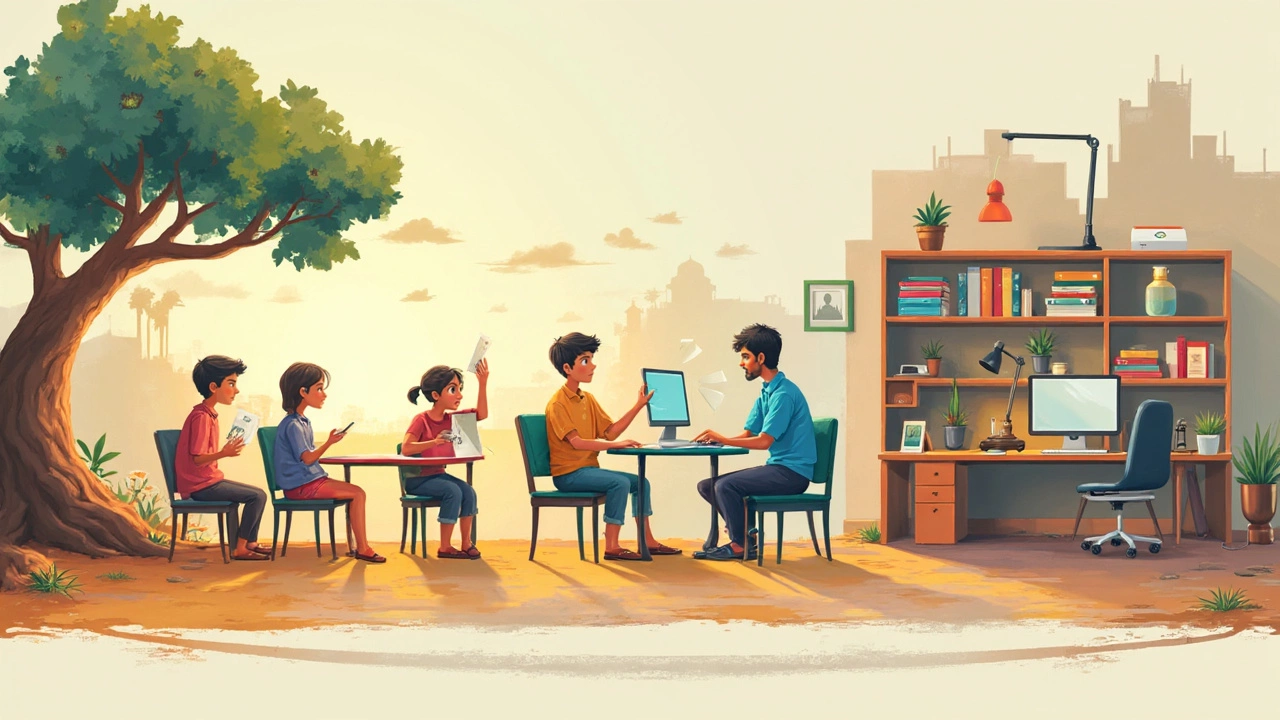
Defining Distance Education: What Really Counts as Remote Learning?
Explore what distance education actually means, how it's grown, and what sets it apart. Dive into real-world examples, tools, challenges, and its future.
Read MoreWhen talking about remote learning, learning that happens outside a traditional classroom through internet‑based tools. Also known as online education, it lets students and teachers connect from anywhere, anytime. E‑learning platforms, software services that host courses, track progress and deliver content provide the backbone, while virtual classroom, live video spaces where teachers can lecture and interact bring real‑time engagement. Finally, digital teaching tools, apps for quizzes, assignments and collaboration make the experience interactive and measurable. Together, these elements form a complete remote learning ecosystem.
Remote learning encompasses online education and therefore requires reliable internet, a device that can run multimedia, and a platform that supports both asynchronous and synchronous activities. The e‑learning platforms enable students to access recorded lectures, reading material and assessments at their own pace, while the virtual classroom component supports live discussions, breakout rooms, and instant feedback. Digital teaching tools like quizzes, polls, and plagiarism checkers help teachers gauge understanding and keep learners motivated. In practice, a school may use Google Classroom for assignment distribution, Zoom for live sessions, and Kahoot! for interactive reviews—all working together to create a seamless learning journey.
First, it expands access. Students in remote villages, busy professionals, or those with health constraints can participate without the commute. Second, it builds digital literacy—students become comfortable with technology that’s increasingly essential in the modern workplace. Third, institutions can scale courses globally, reaching millions without the need for physical expansion. The shift also pushes teachers to adopt innovative methods: flipped classrooms, gamified lessons, and data‑driven personalization become the norm. As a result, the demand for skilled educators who can navigate digital teaching tools and design engaging online content has surged.
Choosing the right e‑learning platform depends on several attributes: cost, ease of use, content library, assessment features, and integration with existing school systems. For instance, platforms that support SCORM packages allow schools to import courses from other providers, while those with built‑in analytics help teachers track student progress in real time. When it comes to the virtual classroom, key factors include video quality, breakout room capabilities, and recording options. A good combination of these tools lowers the barrier for both teachers and learners, turning remote learning from a temporary fix into a lasting educational model.
Below you’ll find a curated list of articles that dive deeper into each of these components. Whether you’re a student looking for study tips, a teacher hunting the best digital tools, or a parent trying to understand how remote learning works, the collection offers practical advice, platform comparisons, and step‑by‑step guides to help you make the most of online education.

Explore what distance education actually means, how it's grown, and what sets it apart. Dive into real-world examples, tools, challenges, and its future.
Read More
Distance learning isn't a new concept—it's been around way longer than you might think! From snail-mail correspondence courses to today's immersive online classes, understanding its history is essential for navigating the modern education landscape. Get the lowdown on the major milestones that have shaped distance education and learn some handy tips for thriving in this evolving format. Whether you're a student or an educator, knowing where it all began can offer insights into where it's headed.
Read More